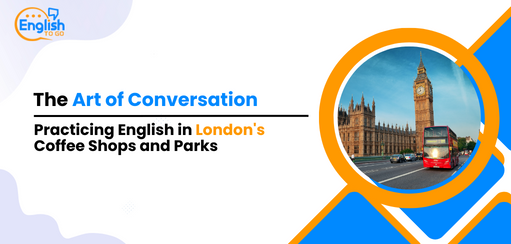London’s historical landmarks are not just architectural marvels. They are rich repositories of language and culture. Exploring iconic sites like Buckingham Palace and Tower Bridge offers more than a visual treat. It is an opportunity to explore the linguistic heritage that has shaped the English language. These landmarks, steeped in history, offer unique insights into the evolution of language, showcasing how history and culture intertwine with the way we communicate.
Join us on a journey through London’s past, where every stone and structure offer a language lesson, and discover the vibrant linguistic tapestry woven into the city’s historical fabric.
The Linguistic Heritage of London’s Landmarks
The linguistic heritage embedded in London’s landmarks is a testament to the city’s rich historical and cultural tapestry, each offering unique insights into the development of the English language.
Historical Narratives and Language Influence
London’s landmarks are repositories of stories that have shaped the language over centuries. For instance, the Tower of London’s history as a royal palace, prison, and treasury encompasses a range of linguistic influences, from legal and military terminology to expressions of royalty and governance.
The language associated with these sites often reflects the times and events they have witnessed. By exploring these narratives, language learners can trace the origins and evolution of specific terms and phrases, understanding how historical events have left an indelible mark on the language.
Enhancing Vocabulary through Stories and History
The stories behind landmarks like Westminster Abbey and St. Paul’s Cathedral offer a glimpse into religious and architectural vocabulary. Words and phrases that originated in these contexts have permeated everyday English, revealing the influence of religion and architecture on the language.
Similarly, visiting places like Shakespeare’s Globe Theatre can illuminate the language of Elizabethan England, showcasing how the playwright’s works have contributed to modern English.
Cultural Insights Through Language
Each landmark offers more than just vocabulary. They provide cultural insights that enrich language understanding. For example, the British Museum, with its vast collection from around the world, introduces words from various cultures that have been assimilated into English.
Engaging with these sites allows learners to experience the language in its cultural context, understanding not just what words mean but why they are used and how they have evolved.
Buckingham Palace: A Symbol of Royal English
Buckingham Palace, the iconic residence of the British monarchy, serves as a remarkable symbol of ‘Royal English,’ a language rich in history and tradition.
Language and Terminologies of Royalty
The language associated with Buckingham Palace and the British monarchy is steeped in formality and tradition. This includes specific terminologies related to the royal household, titles, and ceremonies. Terms like ‘majesty,’ ‘royal assent,’ and ‘court’ are not just words but carry historical significance.
The phrases and expressions used in the context of royalty often reflect centuries-old traditions. They embody a level of formality and respect unique to the royal institution, showcasing the intricate relationship between language and societal hierarchy.
Insights into Formal and Ceremonial English
A visit to Buckingham Palace is more than a tourist experience. It is an opportunity to immerse oneself in the formal and ceremonial version of the English language. The language used in guided tours, exhibitions, and official palace communications provides a glimpse into the formal nuances of English.
This experience allows language learners to understand the subtleties of formal English used in both historical and contemporary royal contexts. It illustrates how language adapts to settings of dignity and formality, differing significantly from casual or everyday English.
Tower Bridge: Engineering Marvel and Linguistic Inspiration
Tower Bridge, a testament to architectural ingenuity, serves not only as a landmark but also as a source of linguistic inspiration in the realms of architecture and engineering.
Language of Architecture and Engineering
Tower Bridge, with its distinctive design and engineering, introduces a range of specialized vocabulary related to architecture and engineering. Terms like ‘suspension bridge,’ ‘bascule,’ and ‘Victorian Gothic style’ are part of the rich lexicon associated with this iconic structure.
The language used to describe Tower Bridge encompasses technical terms that are integral to the fields of civil engineering and architecture. Words and phrases describing its design, construction techniques, and mechanical systems offer an insight into the technical aspects of English used in these professions.
Influence on Descriptive and Technical English
The descriptions and narratives surrounding Tower Bridge provide an excellent example of how technical language can be both informative and descriptive. This melding of technical accuracy with descriptive richness enhances the vocabulary of those interested in the technicalities of architectural design and engineering.
The bridge’s history and its role in London’s development also contribute to a more nuanced understanding of descriptive English, especially in terms of historical and cultural significance. It shows how language can be used to not only convey technical information but also to tell the story of a landmark that has stood the test of time.
Other Historical Icons and Their Language Lessons
London’s landscape is dotted with historical landmarks, each offering its unique linguistic insights.
Language Insights from Iconic Landmarks
- The British Museum, a trove of world history and cultures, introduces a plethora of terms from various eras and civilizations. It is a place where language learners can encounter words related to art, history, and anthropology.
- Westminster Abbey, steeped in British history, offers lessons in language associated with religion, monarchy, and British tradition. Terminologies specific to Gothic architecture, religious ceremonies, and historical events are part of the rich vocabulary linked to this site.
- The Houses of Parliament are not only the center of British political life but also a resource for understanding language related to governance, law, and political procedures. Terms like ‘debate,’ ‘legislation,’ and ‘democracy’ are integral to the language narrative of this landmark.
Interactive Language Learning Activities at Historical Sites
Engaging interactively with these sites can significantly enhance language learning. Participating in guided tours at these sites can provide a comprehensive understanding of specific terminologies while also offering a narrative that aids in language comprehension.
Informational plaques and audio guides available at these landmarks are invaluable resources for learning. They provide context and detailed explanations, making complex terminologies more understandable.
The storytelling aspect of guided narratives helps contextualize the language used. It transforms the learning experience from merely understanding words to appreciating their significance in historical and cultural contexts.
Blending Tourism with Language Development
A visit to these landmarks can be a fruitful venture in developing English fluency.
Tips for Language Enrichment through Tourism
- Engage actively with the content presented at these sites. Taking notes, asking questions, or even recording impressions can be effective ways to reinforce language learning.
- Immersing oneself in the historical context of these landmarks aids in understanding the practical use of language. It encourages learners to connect words and phrases to real-life experiences.
Conclusion
Exploring London’s iconic landmarks is more than a journey through history. It is an enriching linguistic adventure. These sites offer a unique approach to learning English, combining historical insights with language development. Visitors are encouraged to delve into the stories and languages of these historical icons, turning their exploration of London’s rich past into a vibrant language-learning experience.
ETG School in London has helped hundreds of students develop English fluency. Try a free class or send us a message to learn how we can help you develop English mastery.









